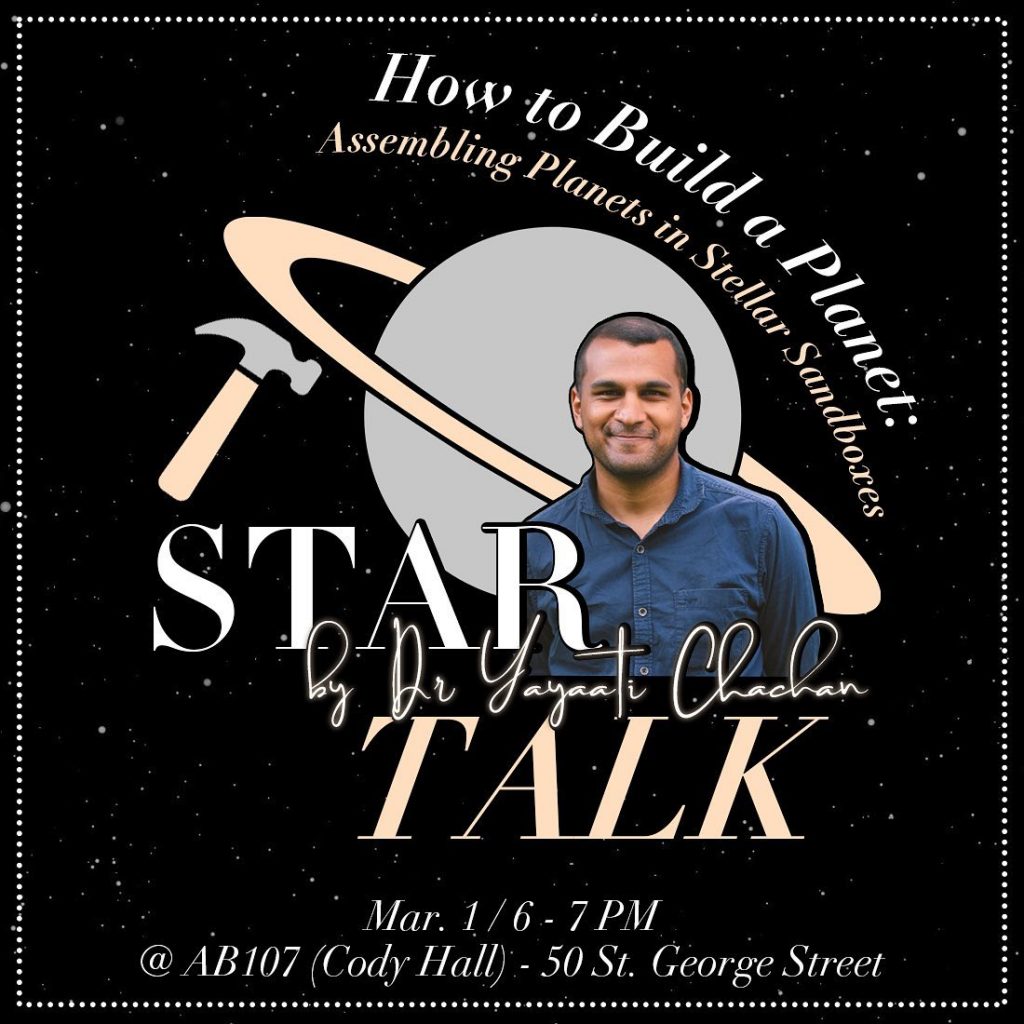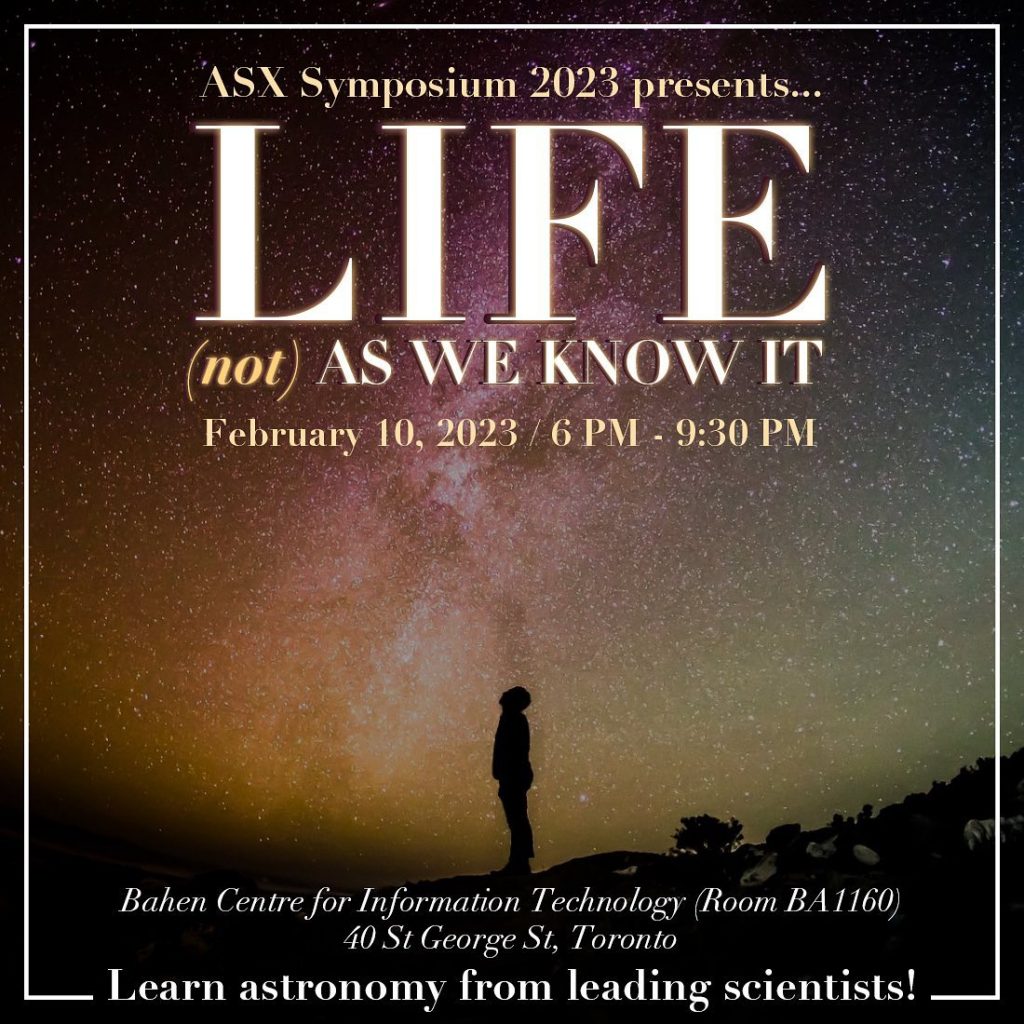Star Talk: How stars can help us find dark matter
How stars can help us find dark matter Astronomers hunt for dark matter through ribbon-like remnants of dead galaxies By Sultan Nessa — Published January 7, 2024 On the morning of November 24, Assistant[…]
Read moreStar Talk: Wednesday, March 1st
How to Build a Planet: Assembling Planets in Stellar Sandboxes🪐Join us with Dr. Yayaati Chachan at 6:00pm on Wednesday, 1st March for our next Star Talk!✨ 📍AB107 (Cody hall) –[…]
Read moreASX 19th Annual Symposium: Life (not) As We Know It
Are aliens real? What are UFOs? Is there another planet that can support life? Get your answers and more at our 19th annual symposium on extraterrestrial life! We are back[…]
Read more



